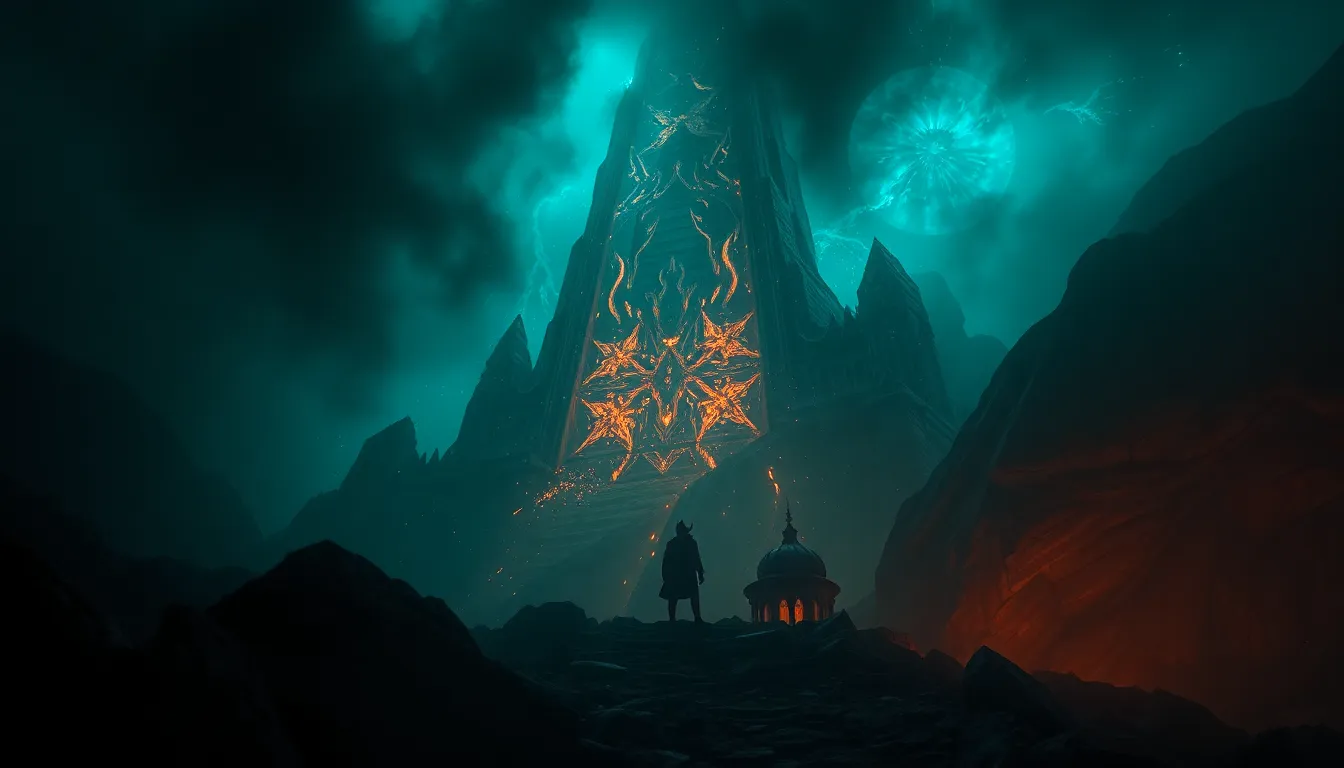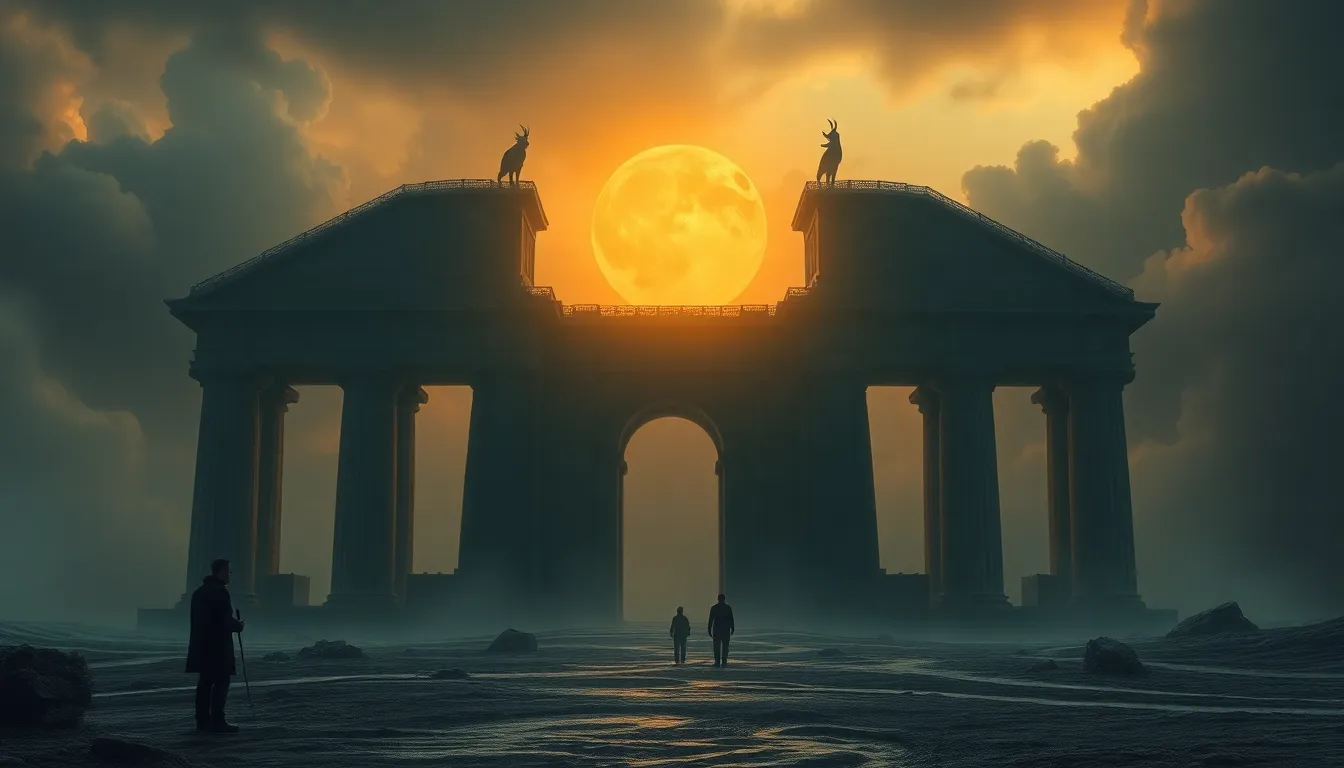The Shape of Legends: How Transformations Define Cultural Narratives
Introduction: The Power of Transformation in Legends
Transformation is a powerful motif in storytelling, serving as a catalyst for character development, plot progression, and thematic depth. Whether it be a character changing physically, mentally, or morally, transformations resonate deeply with audiences. This article explores the significance of transformations in legends and how they contribute to cultural narratives that shape societies and their values.
Defining Legends and Cultural Narratives
Legends are traditional stories that are often rooted in historical events, yet they are embellished with fantastical elements. They serve not only as entertainment but also as vehicles for moral lessons and cultural values. Cultural narratives, on the other hand, are the stories that a society tells about itself, reflecting its beliefs, customs, and shared experiences. Together, legends and cultural narratives form a tapestry that highlights the human experience.
The Archetype of Transformation: Mythical Examples
Throughout history, many legends feature transformations that hold profound symbolic meanings. Some notable examples include:
- Metamorphosis in Greek Myths: Stories like that of Daphne turning into a laurel tree to escape Apollo illustrate the theme of transformation driven by external forces.
- The Tale of Beauty and the Beast: This classic legend emphasizes inner beauty and the transformative power of love, as the Beast transforms into a prince through kindness and understanding.
- The Frog Prince: This story highlights the theme of breaking curses through love and acceptance, showcasing a physical transformation that represents deeper changes.
These transformations are not merely plot devices; they symbolize deeper human truths about change, identity, and the journey towards self-discovery.
Transformation as a Reflection of Societal Change
Transformations in legends often mirror the cultural values and societal norms of the times in which they were created. For example:
- Native American Legends: Many tales involve transformation as a means of illustrating the interconnectedness of nature and humanity, reflecting the indigenous belief systems centered around harmony with the environment.
- Norse Mythology: Stories like that of Odin sacrificing himself for knowledge underscore the transformative power of wisdom in a society that valued strength and bravery.
These case studies reveal how legends evolve, allowing societies to navigate and reflect upon their changing landscapes and values.
The Psychological Impact of Transformation in Storytelling
Psychological theories suggest that transformations in storytelling resonate with audiences because they speak to our innate desires for growth and change. The concept of metamorphosis allows individuals to engage with their own identities, fears, and aspirations.
Transformations in legends often symbolize:
- Personal growth and self-acceptance
- Overcoming adversity and challenges
- Collective experiences that shape community identity
By witnessing characters undergo profound transformations, audiences find reflections of their own journeys, making these stories relatable and impactful.
Modern Interpretations of Traditional Legends
Contemporary media have breathed new life into classic legends, often reinterpreting themes of transformation for modern audiences. Examples include:
- “Beauty and the Beast”: Various adaptations highlight the transformative power of love, with some versions exploring deeper psychological themes.
- “The Shape of Water”: This film reimagines the Beauty and the Beast narrative, focusing on the beauty found in differences and the transformative power of connection.
- Video Games: Titles like “The Legend of Zelda” series often incorporate transformation mechanics that symbolize growth and change within the game narrative.
These adaptations illustrate how traditional legends can evolve while retaining their core themes of transformation.
The Role of Transformation in Hero’s Journeys
Joseph Campbell’s monomyth, or the “hero’s journey,” often includes a significant transformation as a critical element of character development. Key components of this journey include:
- The Call to Adventure: The hero is often faced with a challenge that initiates their transformation.
- The Abyss: During the journey, the hero faces trials that lead to a profound change in understanding and perspective.
- The Return: The transformed hero returns to their community, often bringing new wisdom and insights.
These narrative arcs underscore how transformation contributes not only to character development but also to moral and ethical lessons for the audience.
Cultural Variations: Global Perspectives on Transformation
Transformation themes are prevalent across different cultures, yet they manifest in unique ways. A comparative analysis reveals:
- African Folklore: Many stories involve shapeshifting, illustrating the fluidity of identity and the importance of adapting to circumstances.
- Asian Mythology: Legends often explore themes of enlightenment and rebirth, reflecting cultural beliefs about the cyclical nature of life.
These variations highlight both the universality and specificity of transformation themes in global narratives, showcasing how different societies interpret change and identity.
The Future of Legends: Digital Storytelling and Transformations
As technology advances, digital storytelling platforms are reshaping the way transformations are presented in modern legends. Interactive storytelling mediums, such as virtual reality (VR) and augmented reality (AR), offer immersive experiences that allow audiences to engage with narratives in unprecedented ways.
These innovations have the potential to:
- Enhance emotional engagement through personalized experiences
- Allow audiences to explore multiple paths and outcomes based on their choices
- Revitalize traditional legends by placing them in contemporary contexts
The impact of these technologies on cultural narratives is profound, as they redefine how stories of transformation are told and experienced.
Conclusion: The Enduring Legacy of Transformations in Legends
Transformations in legends play a crucial role in defining cultural narratives, offering insights into human identity, societal values, and the quest for understanding. These stories continue to resonate with contemporary audiences, reflecting our ongoing struggles with change and growth.
As we move forward, the legacy of transformations in legends will undoubtedly influence future storytelling, reminding us that change is not only inevitable but also a vital part of the human experience.



